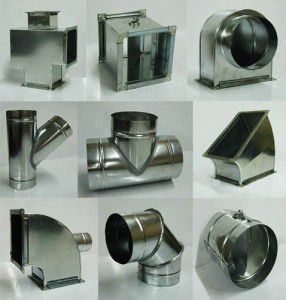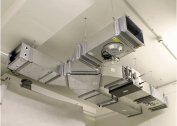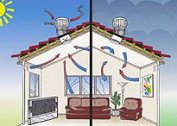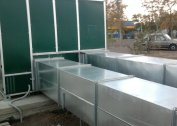Ventilation pipes
The building materials market today offers various pipes for ventilation of residential premises, as well as for public places of crowding, such as bars, fitness rooms, gyms, cinemas and others.
For household ventilation, it is preferable to use the following types of plastic pipes:
- Polyethylene;
- Polyurethane
- Polyvinyl chloride;
- Polypropylene
Of all the above, the most popular material is PVC. Ventilation from PVC pipes is very convenient in transportation, installation and maintenance, since the pipes themselves are quite light. This material is resistant to UV radiation, it is durable, tight and safe for people. However, it is worth paying special attention to all the advantages of using plastic pipes.
Plastic pipes for ventilation
The main advantage of any plastic duct in an apartment or public building is its physical properties such as lightness, strength and mobility. Engineers and designers of ventilation systems increasingly prefer these ventilation materials. Plastic pipes are not subject to corrosion, durable and always more profitable for the customer’s budget than iron analogues.
Ventilation from PVC pipes has special technological properties. On metal pipes there is a varying degree of roughness, leading to repulsion and slowdown of the air flow in the overall system, and a plastic PVC pipe is devoid of this defect.
Diameter of ventilation pipes
If we consider solutions for ventilation equipment, the most popular installation method is to arrange a metal pipe near the ventilation outlet, from which pipes from plastic leave. And this is undoubtedly the best ventilation. The diameter of the pipe in it should be 160 mm.
To avoid unpleasant odors, plastic pipes are often equipped with fans, which ensure the rapid movement of air throughout the system.
Based on their architectural considerations, few buildings use special ventilation with a pipe diameter of 225 mm, but this solution has a very limited distribution due to subsequent engineering problems.
Sewer ventilation
It is believed that sewer pipes are made of low-quality and harmful plastic, which contains toxic substances in its composition, so they are not suitable for use as ventilation. There is some truth in this, as well as a significant nuance. If you use them for inflow, then most likely air will enter the room containing special chemical elements from the pipe, as well as dust and dirt accumulating on its walls.
If the ventilation from the sewer pipes is oriented to the hood, then in this case it becomes suitable at 100%. The only difficult moment is that it really gets dirty quickly.



